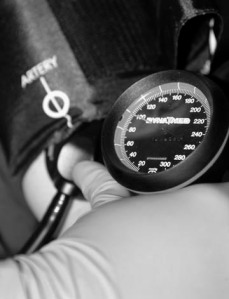Effect of timing of umbilical cord clamping of term infants on maternal and neonatal outcomes

© Gary Wilson/ Pre-hospital Research Forum
This Cochrane Review examines the effects of different policies for clamping the umbilical cord after birth for babies born at term. It compares early cord clamping, which usually takes place within 60 seconds of birth, versus later clamping that usually involves clamping the cord more than one minute after birth or when cord pulsation has ceased.
In the past, the umbilical cord has usually been clamped shortly following the birth of the baby, as part of the active management of the third stage of labour. This strategy might also involve the infant being placed on the mother’s abdomen, put to the breast or more closely examined on a warmed cot if resuscitation was required. However, more recent guidelines for management of the third stage of labour no longer recommend immediate cord clamping, and later clamping of the umbilical cord might take place when cord pulsation has ceased or beyond the first minute following the birth of the baby. However, there is ongoing uncertainty about the relative benefits, or harms, of the two approaches. There have been concerns that late cord clamping might increase the mother’s risk of a postpartum haemorrhage, that could outweigh potential benefits to the baby of delaying clamping which might arise from the extra time for a transfer of the fetal blood in the placenta to the infant at the time of birth. This placental transfusion can provide the infant with an additional 30% more blood volume and up to 60% more red blood cells.
Policies for timing of cord clamping vary, with early cord clamping generally carried out in the first 60 seconds after birth, whereas later cord clamping usually involves clamping the umbilical cord more than one minute after the birth or when cord pulsation has ceased. The benefits and potential harms of each policy are debated.
No studies in this review reported on maternal death or on severe maternal morbidity. There were no significant differences between early versus late cord clamping groups for the primary outcome of severe postpartum haemorrhage or for postpartum haemorrhage of 500 mL or more. There were no significant differences between subgroups depending on the use of uterotonic drugs. Mean blood loss was reported in only two trials with data for 1345 women, with no significant differences seen between groups; or for maternal haemoglobin values at 24 to 72 hours after the birth in three trials.
Neonatal outcomes: There were no significant differences between early and late clamping for the primary outcome of neonatal mortality, or for most other neonatal morbidity outcomes, such as Apgar score less than seven at five minutes or admission to the special care nursery or neonatal intensive care unit. Mean birthweight was significantly higher in the late, compared with early, cord clamping. Fewer infants in the early cord clamping group required phototherapy for jaundice than in the late cord clamping group.
Haemoglobin concentration in infants at 24 to 48 hours was significantly lower in the early cord clamping group. This difference in haemoglobin concentration was not seen at subsequent assessments. However, improvement in iron stores appeared to persist, with infants in the early cord clamping over twice as likely to be iron deficient at three to six months compared with infants whose cord clamping was delayed . In the only trial to report longer-term neurodevelopmental outcomes so far, no overall differences between early and late clamping were seen for Ages and Stages Questionnaire scores.
Authors’ conclusions
A more liberal approach to delaying clamping of the umbilical cord in healthy term infants appears to be warranted, particularly in light of growing evidence that delayed cord clamping increases early haemoglobin concentrations and iron stores in infants. Delayed cord clamping is likely to be beneficial as long as access to treatment for jaundice requiring phototherapy is available.
http://www.cochranejournalclub.com/umbilical-cord-clamping-timing-clinical/pdf/CD004074.pdf (full text)






